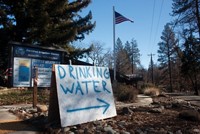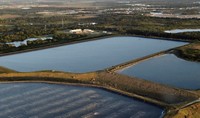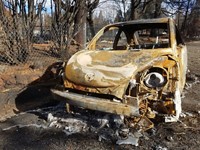Advertisement
Grab your lab coat. Let's get started
Welcome!
Welcome!
Create an account below to get 6 C&EN articles per month, receive newsletters and more - all free.
It seems this is your first time logging in online. Please enter the following information to continue.
As an ACS member you automatically get access to this site. All we need is few more details to create your reading experience.
Not you? Sign in with a different account.
Not you? Sign in with a different account.
ERROR 1
ERROR 1
ERROR 2
ERROR 2
ERROR 2
ERROR 2
ERROR 2
Password and Confirm password must match.
If you have an ACS member number, please enter it here so we can link this account to your membership. (optional)
ERROR 2
ACS values your privacy. By submitting your information, you are gaining access to C&EN and subscribing to our weekly newsletter. We use the information you provide to make your reading experience better, and we will never sell your data to third party members.
Water
Monitoring water quality after wildfires
Researchers are just starting to study how blazes like California’s devastating Camp Fire may contaminate watersheds
by Katherine Bourzac
November 28, 2018
| A version of this story appeared in
Volume 96, Issue 48

The Camp Fire is the deadliest and most destructive wildfire in California’s history. The fire killed 88 people according to the most recent estimates, consumed 18,000 homes and other structures, and burned down the entire town of Paradise. Firefighters contained the conflagration only after it rained during Thanksgiving week. But when the weather shifted, not everyone felt at ease.
California State University, Chico water-quality chemist Jackson Webster says he felt a mixture of relief and trepidation when the rain came. The first storm of the season not only tamped down the fire, it also began the process of flushing an unknown mixture of metals, toxic organic compounds, and other chemicals from the air, ash, and debris into the region’s creeks and rivers. Last week, Webster took his first water samples from a stream that drains from Paradise. The water, he says, has a strong smoky smell. “The first thing you notice is the colors,” he says. Butte Creek is dark brown, like overbrewed black tea.
Environmental chemists don’t know what contaminants will make their way into streams, rivers, and lakes when a fire consumes an entire town. When wildfires reach urban areas, they don’t just burn trees and other plants. They also incinerate houses, cars, and stores, which can be full of electronics, industrial chemicals, fire retardants, plastics, paint, and more. “It is a crazy situation,” says Newsha Ajami, an engineer at the Stanford Woods Institute for the Environment who serves on the San Francisco Bay Regional Water Quality Control Board. Researchers like Webster and Ajami in California are now studying the chemical aftermath of fires like the Camp Fire to get a better sense of the environmental risks they pose to the state’s water supplies and aquatic ecosystems.
Such studies are critical to safeguarding water quality not just in the Western US, Webster says. According to the Fourth National Climate Assessment released last Friday, wildfires will become more frequent and burn larger areas as a result of climate change. California has long had a wildfire season, which now threatens to stretch year-round. The report warns that even regions of the US where fire has not been a seasonal risk, including the Southeast, will see more frequent burns as a result of climate change.
The ash from a wildfire—even those outside of developed areas—can have complex chemistry and in some respects is still poorly understood, says Charles Alpers, a chemist at the US Geological Survey’s California Water Science Center in Sacramento. For example, Alpers has been studying how wildfire affects mercury levels in the waters of Cache Creek northeast of Santa Rosa. The soil in the region, like that of many areas in Northern California and elsewhere with a history of gold mining, is contaminated by mercury. Cache Creek is a small watershed, but it ultimately drains into the Sacramento-San Joaquin River Delta, a rich habitat for migratory birds (and local fishing area) that drains to the San Francisco Bay.

Wildfires can reduce mercury levels in the soil when the conflagration’s extreme heat volatilizes the metal, sending it wafting into the atmosphere. But mercury can also become attached to ash particles and move with them into water. Alpers’s team found lower levels of total mercury in Cache Creek after the 2015 Rocky and Jerusalem Fires, but higher total and relative levels of methylmercury, which is easier for organisms to take up compared with metallic mercury. Martin Tsz-Ki Tsui, an ecotoxicologist at the University of North Carolina at Greensboro, saw different trends in ash from the 2015 Wragg and Rocky Fires. In a forthcoming paper in Environmental Science & Technology, Tsui and collaborators report increased levels of total mercury in local creeks, but less methylmercury, he says.
Advertisement
The mercury-wildfire picture remains unclear. Still, Alpers and Tsui knew their study sites were contaminated by metals. Urban wildfires confront ecotoxicologists and water quality boards with unknown contaminants. Last year’s Tubbs Fire, for example, melted plastic water pipes in Santa Rosa, allowing benzene from the pipe materials to leach into the water supply.
So far, Ajami says water quality monitoring has not turned up other contaminants besides benzene. The San Francisco Estuary Institute, the California Department of Toxic Substances Control, and San Diego State University are still analyzing storm water runoff for unknown and unexpected contaminants following the Tubbs Fire.
These studies take time. For water quality researchers, after a fire there’s a waiting game, says Angela DePalma-Dow, an ecologist at the Lake County Water Department. First they wait until it’s safe to approach a burned area to collect samples; then they wait for rain to push sediment and other runoff into local creeks and then into lakes and estuaries and bays. Since this summer’s Mendocino Complex Fire—which burned 459,123 acres, the largest area in California history—it’s rained twice, but the ground has mostly soaked up the water. DePalma-Dow and others in Lake County are preparing for the season’s coming, bigger rains, which will eventually flush wildfire runoff into Clear Lake, in Lake County. Clear Lake is a major tourist destination, and it feeds 17 drinking water sources.
Because of the fire, Lake County will do more extensive water chemistry tests than usual, first in the lake’s tributaries, then in the lake itself, DePalma-Dow says. In addition to testing for typical contaminants, such as nutrients and suspended solids, tests in coming months will zero in on metals including iron, aluminum, cadmium, and manganese, she says. She’s concerned that closed mines and old structures that burned may be a source of these metals, as well as lead.
With the Camp Fire only just recently contained, Chico State’s Webster says it presents a unique opportunity to study the water quality impacts of fires at the urban-wilderness interface, and he’s moving as quickly as possible to gather samples. The devastated town of Paradise was located at the top of the region’s watershed. Three streams drain from the site into Butte Creek, which eventually flows into the Sacramento River. “It really could be a new type of watershed contamination,” he says. “This is so unprecedented we don’t even know what we’re looking for and how to deal with it.”
He hopes to set up automatic samplers in the three streams in the area to monitor for potential contamination during the winter storm season. Metals, fire retardants and other polybrominated compounds, polycyclic aromatic hydrocarbons, and polychlorinated biphenyls are on the list of contaminants Webster will test for. He’s particularly interested in finding out whether potential contaminants get trapped in the creek’s sediments or are flushed out.
The unknowns are troubling, Ajami says. “Most of the things we are monitoring for are things we are guessing will end up in the water through urban burn, but we depend on so many different chemicals in our buildings,” she says. “There is a big need for better understanding of the impact of wildfires on water quality.” Depending on what they find, there may be implications for water treatment facilities or fisheries. But it’s hard to say in the absence of more information about specific contaminants, Webster says.
In an email to C&EN, a spokesperson from the US Environmental Protection Agency emphasized that contaminants from wildfires will not reach consumers’ taps, and are unlikely to find their way into the groundwater. Streams, lakes, and other surface water sources are, however, vulnerable, they said.
Webster and DePalma-Dow hope their work will help researchers and government administrators dealing with future wildfires to know what to look for and how to prevent potential problems. DePalma-Dow says there’s already a certain degree of information sharing going on between wildfire-prone counties in California about what contaminants to look for. They’ll need to keep those lines of communication open, Webster says. “It’s likely this will happen again.”





Join the conversation
Contact the reporter
Submit a Letter to the Editor for publication
Engage with us on Twitter